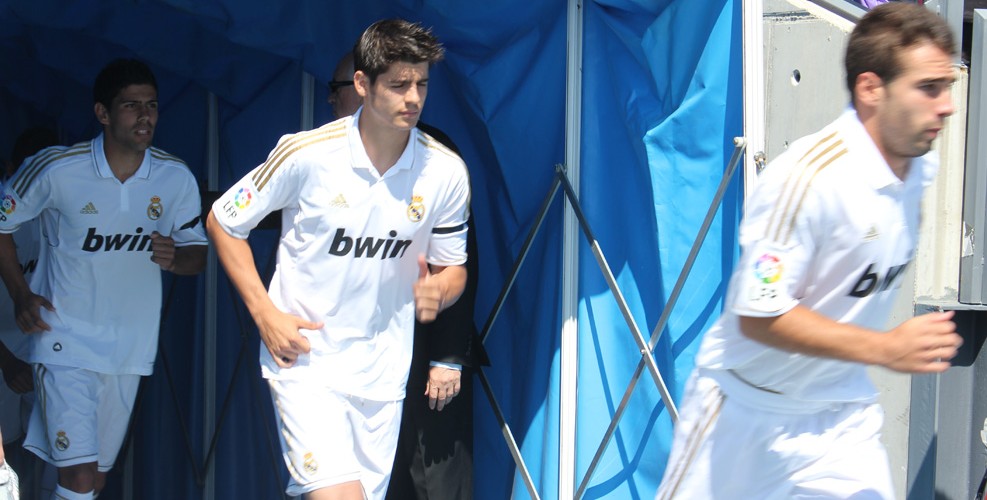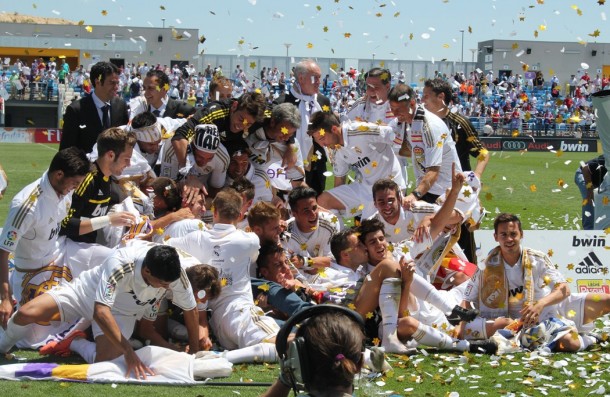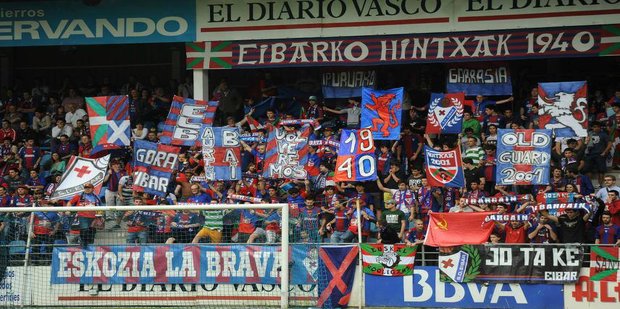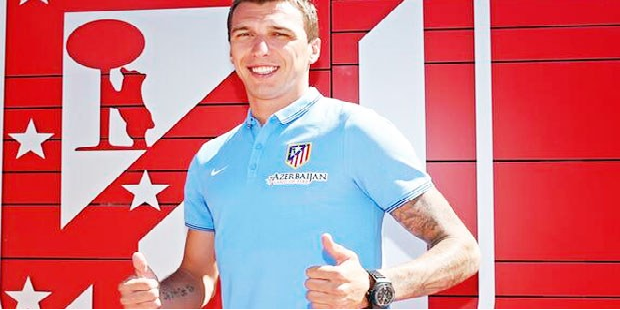- S.D. Eibar ready for maiden La Liga outing
- SD Eibar stengthen ahead of debut La Liga season
- Can ‘Super Mario’ live up to expectations in Madrid?
- MAN IN THE GROUND – Brentford 0 – 4 Osasuna
- Historic Basque derby welcomes S.D. Eibar to La Liga
- Munich to Madrid, via Brazil – Tony Kroos
- Rakitic in Spanish Switch
- Can Spain find redemption in Rio?
- Viva Espana! A season of redemption for Spanish football
- From the old to the new: who can fill the void in years to come for La Roja?
Real Madrid Castilla – More Than a Reserve Team
- Updated: 3 July, 2012


The Spanish League is not alone in allowing the reserve teams of the larger clubs to compete in all but the top division. Over the years this has thrown up many intriguing accounts of mergers, separations and very occasionally, direct encounters with the parent team.
Real Madrid Castilla has experienced all of these, including a famous encounter with the first team, but first of all let’s go back to the beginning.
Within a couple of years of its foundation, Real Madrid had established a network of relationships with local clubs that ensured that they had first refusal on any promising players. As the club’s stature grew, so did its catchment area and number of associated clubs increased.
By the 1920’s Racing Club de Madrid, Real Sociedad Gimnastica Española and Unión Sporting Club had all joined the congregation. In 1930, Pablo Philip and Agustín Martín formed Agrupacion Deportiva Plus Ultra, the multi-sports association of the Plus Ultra Insurance Group.
Initially, the club’s football section competed in competitions organised specifically for businesses, but in 1943 it changed its charter in order to join the Castellana Federation. The club also purchased the old velodrome at Ciudad Lineal in 1943, which had briefly staged Real Madrid first team matches some twenty years earlier. After making rapid progress in the regional leagues, the club earned promotion to the Tercera in in 1946-47. Then Real Madrid came a-calling.
AD Plus Ultra became a feeder club to Real Madrid in 1948. The additional financing and expertise paid immediate dividends as the Tercera title was won in 1948-49 and with it, direct promotion to La Segunda. AD Plus Ultra made an impressive start to life in the second tier, finishing third in Group II, as well as reaching the third round of the Copa del Rey.
The club became the sole affiliated club and unofficial reserve team to Real Madrid in 1952, but then experienced the down side of its relationship. Players such as Zárraga, Grosso, Miguel Munoz and Casado had all progressed through the ranks to the first team, but this left the AD Plus Ultra with inexperienced players who could not make the same impression as their predecessors in La Segunda.
Performances continued to decline following relegation to the Tercera in 1963 and within a decade, the Plus Ultra Insurance Group was no more. Real Madrid acquired the club’s licence in 1972 and set up Castilla Club de Futbol. The new club moved from Ciudad Lineal to the Cuidad Deportiva, Real Madrid’s training complex, a mile or so north of the Estadio Santiago Bernabeu.
In season 1977-78 Castilla CF was handed a place in the new Segunda B and finished runners-up in the inaugural season. This earned promotion to La Segunda, an elevation that would start the most remarkable phase in the club’s history.
Form in their first two seasons back in the second tier had been consistent, however it was Castilla’s run in the 1979-80 Copa del Rey that captured the nation’s imagination. They beat Hercules, Athletic Club, Real Sociedad and Sporting Gijon on their way to the final, before meeting their parent club, Real Madrid in the final at the Santiago Bernabeu. There was no fairy-tale finish as the first team ran out 6-1 winners.
The 1983-84 season saw the club surpass any previous league form and finish top of La Segunda, ahead on goal difference from another reserve team, Bilbao Athletic Club. As we all know, reserve teams cannot play in the same division as their parent club, so the third, fourth & fifth placed teams were promoted to La Primera. As the top players from this golden age such as Vazquez, Miguel Pardeza, Manolo Sanchis, Michel and Butragueno moved up to the first team, so Castilla’s fortunes declined, and in 1990 the club dropped back to Segunda B.
In 1990 a change in regulations stipulated that all affiliated teams of a professional club, must be assimilated into the professional club. This led to the dissolving of Castilla CF and in its place rose Real Madrid Deportivo. Promotion to La Segunda was won in 1992, but fourth place in 95-96 was as good as it got and at the end of the following season, Real Madrid B, as they were now known, had dropped back to the third tier.
Thoughts off the pitch centred on the ageing Ciudad Deportiva, which was now surrounded by Madrid’s booming financial district. With mounting club debts, the club was keen to sale, but there was a problem. The Ciudad Deportiva was built on land that was specifically allocated for non-commercial use and it took some wheeling and dealing, which included the club giving the government a portion of the land, before they were able to sale and redevelop elsewhere.
Real Madrid’s new sports city was located 6 miles north east of the city centre, near Valdebebas. Benefiting from the €480m the club made from the sale of the Ciudad Deportiva, no expense was to be spared in developing the world’s largest and most lavish training complex. Real Madrid B moved in towards the end of the 2003-04 season and used one of the smaller pitches to the north east of the complex.
In July 2005 the team adopted a new title, Real Madrid Castilla and took the new name into La Segunda for the 05-06 season. On 9 May 2006, Real Madrid opened the centre-piece of their sports city, the Estadio Alfredo di Stefano. named after their greatest ever player. In a nice touch, the inaugural match saw Real Madrid’s first team take on Stade Reims in a rematch of the first ever European Cup Final.
Only Real Madrid & Barcelona could invest so much into a stadium for their reserve sides. However, whilst Barca’s Mini Estadi is a piece of 1980’s functionality, the Estadio Alfredo Di Stefano is 21st century cutting edge. It may only hold 6,000 spectators, but it is tailored to meet the needs of the modern player and media. From a spectators point of view, the stadium is comfortable and the main stand on the west side is quite impressive, but in reality, it isn’t terribly exciting.
Maybe this is because it is still work in progress? With spectators confined to the main stand and the open east bank, it does feel unfinished, but the current structure does allow for expansion. But does Real Madrid need a 20,000 seat stadium for its reserve team in the middle of nowhere? Probably not, and the only development since opening has seen temporary seating added to each end of the arena.
With Castilla’s return to the second division confirmed for the 2012-13 season, the Estadio Alfredo Di Stefano can look forward to some full houses in the near future, including the mini El Clasico when the youngsters of Barcelona B come to town.
Follow @icentrocampista
One Comment
You must be logged in to post a comment Login






Pingback: Halychyna.org » Blog Archive » CD Lugo and the Angel of the North